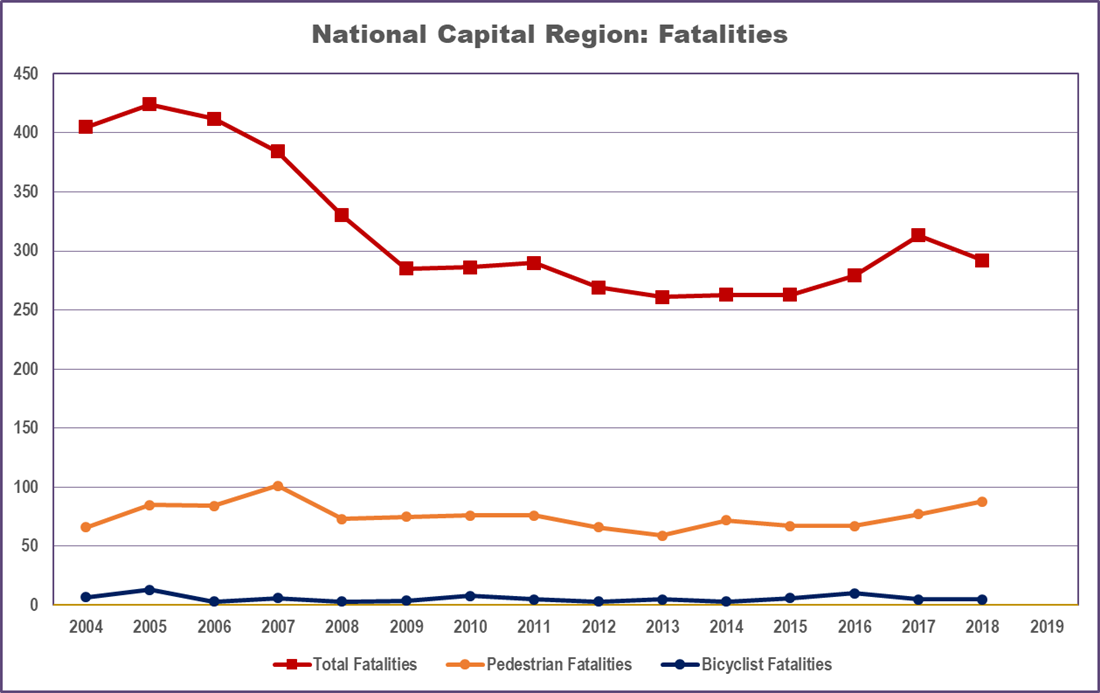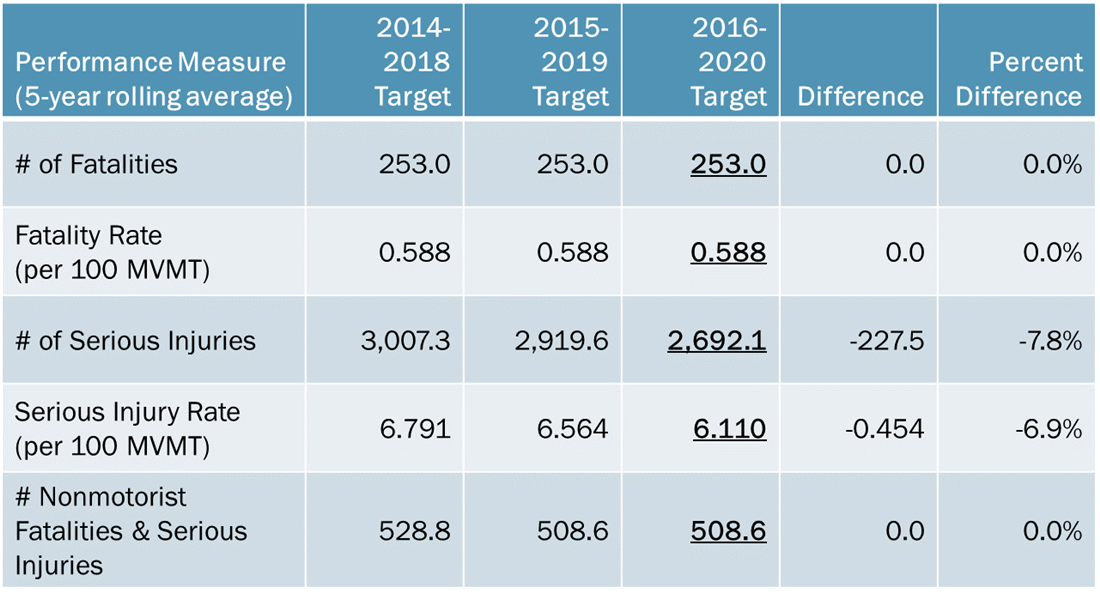Roadway Safety is a top priority for the TPB. Understanding the facts and figures behind the region’s roadway safety challenges helps the board, member agencies, and staff address these safety problems. Additionally, the federal government requires Metropolitan Planning Organizations (MPOs) like the TPB to set highway safety targets, collect and report data about highway safety for the region as part of Performance Based Planning and Programming.
As a part of this process the TPB has a chance to look at recent safety trends, assess how the region is doing, and set realistic safety targets. Here’s a little explanation about what is required, how the TPB creates its targets, and the next steps in the process.
Recent Safety Trends
First, let’s take a moment to assess the recent safety trends in the region. In 2018 there were a total of 292 fatalities on the region’s highways. While this is a slight improvement over the 313 fatalities in 2017, it is not an acceptable outcome. Of the 292 total fatalities, 88 of them were pedestrians (11 more than in 2017) and 5 of them were bicyclists.

This chart shows roadway fatalities from 2004 to 2018 in the National Capital region. (TPB)
What MPOs Have to Report
Next, here’s a little more about the federal requirements for what to measure and why. Federal rules require states as well as MPOs like ours to report on safety performance every year and set safety targets. This requirement is intended to give regional decisionmakers the tools they need to take actions to improve roadway safety at a regional scale.
This means that MPOs and states must report both the number and rate of fatalities and injuries on the roads. They are also required to report the number of pedestrian and bicyclist fatalities and serious injuries. The absolute numbers help identify trends, while looking at rates helps account for underlying VMT growth.

The federal government requires MPOs report on the measures defined above. (TPB)
Realistic not aspirational
It’s important to remember that federal regulations require these safety targets to be realistic not aspirational. Realistic targets that are based on recent data allow the region to predict how the planned level of its efforts may affect the numbers of serious injuries or death on the roads. They can also highlight changes in efforts needed including how to invest resources towards interventions that have the most potential to reduce deaths and serious injuries.
The TPB does aspire to find ways the region can dramatically decrease death and serious injuries on our region’s roadways while simultaneously following through on the data-driven targets required by federal law. To help the region work toward those goals, the TPB has commissioned a regional safety study to better understand what is behind the unacceptably high number of fatalities on our roadways. The board asked for this study after seeing the trends when setting the region’s targets last year. The study is currently underway and will identify the crash types, behaviors, and locations associated with fatal and serious injury crashes as well as which research-based countermeasures would be most effective in reducing them. Results of this study will be available in the first quarter of 2020.
A multi-state region needs a hybrid approach
The TPB is working with its state partners to learn about best practices in reporting on safety data. To ensure that the way we set our regional targets is consistent with how our state partners do it, TPB staff have recommended targets based on a process that incorporates the targets from the District of Columbia, suburban Maryland and Northern Virginia into one set of regional targets.
This approach applies Maryland’s target setting method to the Maryland portion of the region and Virginia’s target setting approach to the Virginia portion of the region. The resulting Maryland and Virginia sub targets are then combined with the District of Columbia targets to create overall targets for the region.

The TPB will take up these draft targets for approval at its December meeting. (TPB)
TPB staff are taking feedback from the board and the TPB Technical Committee. Next, the TPB will be taking up these targets for approval at its December 20 meeting.
Get TPB agendas and meeting materials delivered to your inbox.